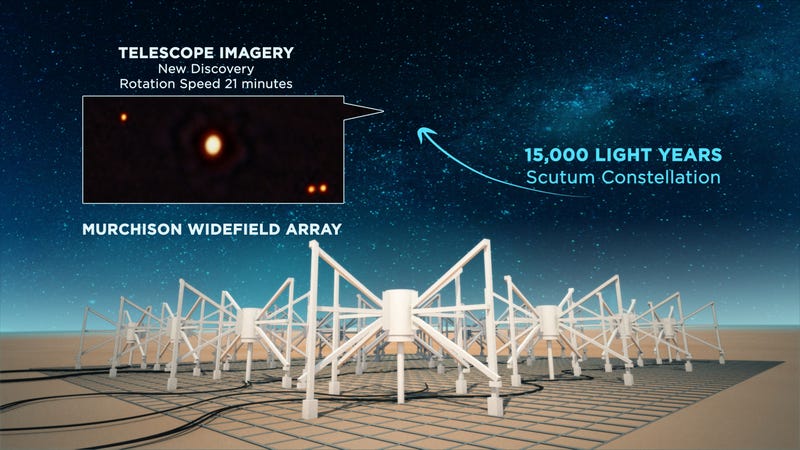An intensely magnetic neutron star roughly 15,000 light-years from Earth is stumping astronomers with its ultra-long periods, unleashing radio waves into the cosmos every 22 minutes.
Neutron stars with intense magnetic fields are called magnetars. Now, 22-minute periods may sound relatively frequent in Earthly time scales, but most magnetars have periods between a few seconds and a few minutes. The team’s research describing the object was published this week in Nature.
“This remarkable object challenges our understanding of neutron stars and magnetars, which are some of the most exotic and extreme objects in the Universe,” said Natasha Hurley-Walker, an astronomer at Curtin University’s International Centre for Radio Astronomy Research and the study’s lead author, in an ICRAR release.
Magnetars are responsible for plenty of the fast radio bursts (FRBs) astronomers witness emanating throughout the cosmos, even from within our own galaxy. But long period radio bursts (or ultra-long period bursts, in the parlance of the researchers) are less common.
The ultra-long period magnetar is named GPM J1839-10, and was first spotted using the Murchison Widefield Array, a radio telescope array located in remote Western Australia. The magnetar’s bursts last up to five minutes long and have been repeating since at least 1988, according to radio archives searched by the team.

The team first found a long-period magnetar in January 2022, but the team wanted to know if the object was unique or if there were others like it. Sweeps using the Murchison Widefield Array between July 2022 and September 2022 turned up GPM J1839-10, with its radio bursts that could persist up to five times longer than the first magnetar they spotted.
The star’s period, the team wrote, is “at the very limit of any classical theoretical model that predicts dipolar radio emission from an isolated neutron star.”
In a perplexing twist, the magnetar shouldn’t be able to emit the energetic outbursts the team is seeing. “The object we’ve discovered is spinning way too slowly to produce radio waves—it’s below the death line,” Hurley-Walker said. “Assuming it’s a magnetar, it shouldn’t be possible for this object to produce radio waves. But we’re seeing them.”
More data on more magnetars will help clarify how much of an outlier GPM J1839-10 is compared to other radio wave sources. The Square Kilometer Array will certainly help that search. Set to be the world’s largest radio telescope, construction on the array began in December 2022.
